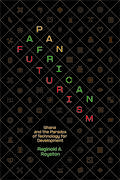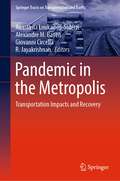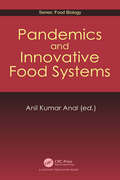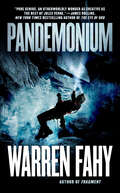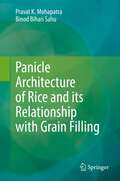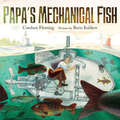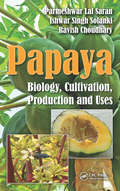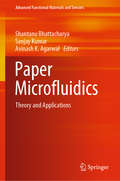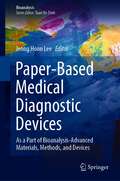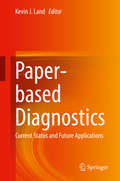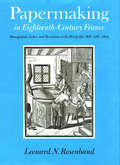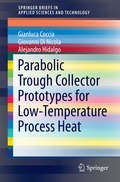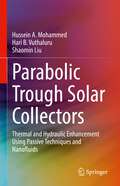- Table View
- List View
Pan-African Futurism: Ghana and the Paradox of Technology for Development
by Reginold A. RoystonGhana has been a crucial site of encounters between the West and Africa and a historic center for twentieth-century Pan-African independence movements. Today, it has also emerged as an important node of technology-driven development in the Global South. Ghana's activist software developers and digital diaspora are redefining the role of technology, not simply as a means for economic growth, but as a tool for greater African political autonomy. In this rich ethnography, Reginold A. Royston uses the term "Pan-African futurism" to describe the redemptive ethos among technologists working on development projects on the ground in Africa today. Royston charts the explosion of mobile Internet access on the African continent, growing interest in African tech entrepreneurship, and the flowering of digital transnational ties. Ghana's Pan-African futurists advocate entrepreneurship and civil society activism as a means of "hacking" the kinds of socioeconomic development that have long been advocated by NGOs. Using participant observation and interviews with tech developers on the ground and media producers in the diaspora, including in virtual spaces and with communities online, Royston provides a nuanced portrait of tech users focused on "social good" emanating from the Global South, expanding the discourse for contemporary Pan-African politics.
Pan-organizational Summit On The U.s. Science And Engineering Workforce: Meeting Summary
by Marye Anne FoxEach of 32 nonprofit organizations contributing a presentation to the Pan-Organizational Summit on the Science and Engineering Workforce (November 11-12, 2002; The National Academies, Washington, DC) was invited to issue a corresponding position paper to be reproduced in this volume. The bulk of this report comprises these papers. In addition, Shirley Jackson and Joseph Toole, two of the keynote speakers, have included their remarks.
Pandemic in the Metropolis: Transportation Impacts and Recovery (Springer Tracts on Transportation and Traffic #20)
by Anastasia Loukaitou-Sideris Alexandre M. Bayen Giovanni Circella R. JayakrishnanThis book brings together reports of original empirical studies which explore the impacts of the COVID-19 pandemic on urban mobility and transportation and the associated policy responses. Focusing on the California region, the book draws on this local experience to formulate general lessons for other regions and metropolitan areas. The book examines how the COVID-19 pandemic has had different impacts on vulnerable populations in cities. It explores the pandemic's impacts on the transportation industry, in particular public transit, but also on other industries and economic interests that rely on transportation, such as freight trucking, retail and food industries, and the gig-economy. It investigates the effect of the viral outbreak on automobile traffic and associated air quality and traffic safety, as well as on alternative forms of work, shopping, and travel which have developed to accommodate the conditions it has forced on society. With quantitative data supported with illustrations and graphs, transportation professionals, policymakers and students can use this book to learn about policies and strategies that may instigate positive change in urban transport in the post-pandemic period.
Pandemics and Innovative Food Systems (Food Biology Series)
by Anil Kumar AnalThe debate on health, nutrition and food security could not have arisen at a more opportune time. The recent pandemic has given rise to increased food and nutrition insecurity for individuals, families, and communities. The crisis threatened the food security and nutrition of millions of people, many of whom were already suffering. We face possible disruptions to the functioning of food systems, with severe consequences for health and nutrition. Pandemics create a greater burden for poorer countries and countries since they are already pressure of inadequate food supplies. With concerted action, we can not only avoid some of the worst impacts but do so in a way that supports a transition to more sustainable food systems that are in better balance with nature and that support healthy diets – and thus better health prospects for all. This book aims to highlight the impact of pandemics in food systems and nutrition security. It draws on the experience from the past and present pandemics to better prepare the world for future crises.
Pandemonium
by Warren Fahy“What do you get when you cross Jurassic Park with an ancient underground city? The answer is Pandemonium, an exciting read.” —Steve Alten, New York Times–bestselling author of MegDeep beneath the Ural Mountains, in an underground city carved out by slave labor during the darkest hours of the Cold War, ancient caverns hold exotic and dangerous life-forms that have evolved in isolation for countless millennia. Cut off from the surface world, an entire ecosystem of bizarre subterranean species has survived undetected—until now.Biologists Nell and Geoffrey Binswanger barely survived their last encounter with terrifying, invasive creatures that threatened to engulf the planet. They think the danger is over until a ruthless Russian tycoon lures them to his underground metropolis, where they find themselves confronted by a vicious menagerie of biological horrors from their past—and by entirely new breeds of voracious predators. Now they’re rising up from the bowels of the Earth to consume the world as we know it.“Warren Fahy’s Pandemonium is pure genius, an otherworldly wonder as creative as the best of Jules Verne. Here is riveting scientific speculation paired with bravado storytelling. I want more!” —James Rollins, #1 New York Times–bestselling author“Warren Fahy’s new novel Pandemonium is probably the best high-tech thriller I’ve read since The Mote in God’s Eye. My heart was pounding (literally) from page one. Can’t wait for his next tale.” —David Hagberg, New York Times–bestselling author
Pandora's Clock
by John J. NanceA plane carrying a supervirus searches for a place to land in this &“combination of The Hot Zone and Speed&” by a New York Times–bestselling author (USA Today). On a snowy road in a German forest, Ernest Helms sees a man trying to break into his car. After a scuffle, Helms escapes with only a cut on his hand. Hours later, he collapses aboard a flight from Frankfurt to New York. The pilot, Capt. James Holland, radios London to plan an emergency landing to save Helms—and then the nightmare begins. Heathrow denies Holland permission to land: Helms has been stricken with an ultracontagious pathogen that threatens the entire planet. When Germany also refuses to let him land, Holland and his passengers are prisoners of the sky, caught between a deadly disease and a world that would rather shoot them down than risk contamination. Written by a former aviator known as the master of mile-high suspense, this is a pulse-pounding thriller about infectious disease in the tradition of Outbreak and The Andromeda Strain. Threatened by hostile governments on the ground and disease in the sky, Captain Holland is in for the flight of his life.
Panicle Architecture of Rice and its Relationship with Grain Filling
by Binod Bihari Sahu Pravat K. MohapatraThis book shows the importance of rice for human consumption. It focuses on the rice panicle, its morphology and characteristics. High genetic diversity of rice has been economically profitable for mankind; the crop provides food calories to half of the human race on earth and because of its adaptability to diversified and unstable ecological conditions, the plant has an asynchronous flowering system in the panicle. The International Rice Research Institute has a collection of panicles with numerous branching phenotypes and lengths varying from 10 to 43 cm. Due to the heterogeneous architecture, grain filling depends on the position of the spikelet within a panicle. Spikelets on apical branches fertilize early and fill faster compared to their basal counterparts and therefore, individual grain weights of panicle vary widely. The discrepancy in grain filling between spikelets changes with panicle architecture but the relationship of variation in individual grain weight with panicle architecture has not been studied. Spikelet number has increased highly in the newly developed rice cultivars, but it has no benefit accrued on grain filling and yield. This book is recommended for students, researchers and teachers working in this field of expertise.
Panthera Tigris
by Sylvain AlzialWhile reading an encyclopedia, a highly educated scientist realizes that he doesn&’t know anything about tigers! He begins studying them until he can rattle off every tiger fact imaginable, including their habitat (jungles and marshy areas), their average weight (300-500 pounds), and their scientific name (Panthera tigris). But when he hires a guide to take him to see a tiger in person, the scientist discovers that he might not quite know everything.With deadpan humor and illustrations that perfectly complement the story, Panthera Tigris will delight nature lovers and budding scientists.
Papa's Mechanical Fish
by Candace FlemingCandace Fleming and illustrator Boris Kulikov pair up to tell a fun story about a real submarine inventor in Papa's Mechanical FishClink! Clankety-bang! Thump-whirr! That's the sound of Papa at work. Although he is an inventor, he has never made anything that works perfectly, and that's because he hasn't yet found a truly fantastic idea. But when he takes his family fishing on Lake Michigan, his daughter Virena asks, "Have you ever wondered what it's like to be a fish?"—and Papa is off to his workshop. With a lot of persistence and a little bit of help, Papa—who is based on the real-life inventor Lodner Phillips—creates a submarine that can take his family for a trip to the bottom of Lake Michigan.
Papal Bull: Print, Politics, and Propaganda in Renaissance Rome (Singleton Center Books in Premodern Europe)
by Margaret MeserveHow did Europe's oldest political institution come to grips with the disruptive new technology of print?Printing thrived after it came to Rome in the 1460s. Renaissance scholars, poets, and pilgrims in the Eternal City formed a ready market for mass-produced books. But Rome was also a capital city—seat of the Renaissance papacy, home to its bureaucracy, and a hub of international diplomacy—and print played a role in these circles, too. In Papal Bull, Margaret Meserve uncovers a critical new dimension of the history of early Italian printing by revealing how the Renaissance popes wielded print as a political tool. Over half a century of war and controversy—from approximately 1470 to 1520—the papacy and its agents deployed printed texts to potent effect, excommunicating enemies, pursuing diplomatic alliances, condemning heretics, publishing indulgences, promoting new traditions, and luring pilgrims and their money to the papal city. Early modern historians have long stressed the innovative press campaigns of the Protestant Reformers, but Meserve shows that the popes were even earlier adopters of the new technology, deploying mass communication many decades before Luther. The papacy astutely exploited the new medium to broadcast ancient claims to authority and underscore the centrality of Rome to Catholic Christendom. Drawing on a vast archive, Papal Bull reveals how the Renaissance popes used print to project an authoritarian vision of their institution and their capital city, even as critics launched blistering attacks in print that foreshadowed the media wars of the coming Reformation. Papal publishing campaigns tested longstanding principles of canon law promulgation, developed new visual and graphic vocabularies, and prompted some of Europe's first printed pamphlet wars. An exciting interdisciplinary study based on new literary, historical, and bibliographical evidence, this book will appeal to students and scholars of the Italian Renaissance, the Reformation, and the history of the book.
Papaya: Biology, Cultivation, Production and Uses
by Parmeshwar Lal Saran Ishwar Singh Solanki Ravish ChoudharyWith coverage that ranges from basic information to advanced research, Papaya: Biology, Cultivation, Production and Uses pulls together the vast literature scattered over various sources into one practical resource. The book provides a solid review of papaya biology, production, and uses supported by color photographs and illustrations. It covers p
Paper Machine Clothing: Key to the Paper Making Process
by Sabit AdanurEveryone involved in paper making knows Asten as a world class manufacturer of paper machine clothing. Perhaps less well known is that Asten started in this industry more than 120 years ago. Since then the company has taken advantage of modern manufacturing techniques to produce innovative products needed by the growing paper making industry. That is why Asten commissioned Dr. Sabit Adanur to write this book - to continue spreading sophisticated papermaking knowledge throughout the global paper industry. This book discusses how the latest technological innovations help produce quality paper products. It also covers the use of TQM and computers in the papermaking process as basic paper structure and properties.
Paper Machines: About Cards & Catalogs, 1548-1929 (History and Foundations of Information Science)
by Markus KrajewskiWhy the card catalog—a “paper machine” with rearrangeable elements—can be regarded as a precursor of the computer.Today on almost every desk in every office sits a computer. Eighty years ago, desktops were equipped with a nonelectronic data processing machine: a card file. In Paper Machines, Markus Krajewski traces the evolution of this proto-computer of rearrangeable parts (file cards) that became ubiquitous in offices between the world wars. The story begins with Konrad Gessner, a sixteenth-century Swiss polymath who described a new method of processing data: to cut up a sheet of handwritten notes into slips of paper, with one fact or topic per slip, and arrange as desired. In the late eighteenth century, the card catalog became the librarian's answer to the threat of information overload. Then, at the turn of the twentieth century, business adopted the technology of the card catalog as a bookkeeping tool. Krajewski explores this conceptual development and casts the card file as a “universal paper machine” that accomplishes the basic operations of Turing's universal discrete machine: storing, processing, and transferring data. In telling his story, Krajewski takes the reader on a number of illuminating detours, telling us, for example, that the card catalog and the numbered street address emerged at the same time in the same city (Vienna), and that Harvard University's home-grown cataloging system grew out of a librarian's laziness; and that Melvil Dewey (originator of the Dewey Decimal System) helped bring about the technology transfer of card files to business.
Paper Machines: About Cards and Catalogs, 1548-1929
by Peter Krapp Markus KrajewskiToday on almost every desk in every office sits a computer. Eighty years ago, desktops were equipped with a nonelectronic data processing machine: a card file. In Paper Machines, Markus Krajewski traces the evolution of this proto-computer of rearrangeable parts (file cards) that became ubiquitous in offices between the world wars. The story begins with Konrad Gessner, a sixteenth-century Swiss polymath who described a new method of processing data: to cut up a sheet of handwritten notes into slips of paper, with one fact or topic per slip, and arrange as desired. In the late eighteenth century, the card catalog became the librarian's answer to the threat of information overload. Then, at the turn of the twentieth century, business adopted the technology of the card catalog as a bookkeeping tool. Krajewski explores this conceptual development and casts the card file as a "universal paper machine" that accomplishes the basic operations of Turing's universal discrete machine: storing, processing, and transferring data. In telling his story, Krajewski takes the reader on a number of illuminating detours, telling us, for example, that the card catalog and the numbered street address emerged at the same time in the same city (Vienna), and that Harvard University's home-grown cataloging system grew out of a librarian's laziness; and that Melvil Dewey (originator of the Dewey Decimal System) helped bring about the technology transfer of card files to business.
Paper Microfluidics: Theory and Applications (Advanced Functional Materials and Sensors)
by Sanjay Kumar Shantanu Bhattacharya Avinash K. AgarwalThis volume provides an overview of the recent advances in the field of paper microfluidics, whose innumerable research domains have stimulated considerable efforts to the development of rapid, cost-effective and simplified point-of-care diagnostic systems. The book is divided into three parts viz. theoretical background of paper microfluidics, fabrication techniques for paper-based devices, and broad applications. Each chapter of the book is self-explanatory and focuses on a specific topic and its relation to paper microfluidics and starts with a brief description of the topic’s physical background, essential definitions, and a short story of the recent progress in the relevant field. The book also covers the future outlook, remaining challenges, and emerging opportunities. This book shall be a tremendous up-to-date resource for researchers working in the area globally.
Paper Wings
by Les AbendA body in a boat and a deadly emergency landing lead an airline pilot to uncover a conspiracy in this technological thriller. When a boat and its grisly cargo are found adrift off Fort Lauderdale the investigation leads to more than &“just&” murder. In fact, the evidence points to a connection of an in-flight emergency that resulted in passenger fatalities and forced a diversion of Patriot Airlines Flight 63 to Bermuda. As the accidents investigation chairman of the pilots&’ union, Captain Hart Lindy will find himself reluctantly drawn into the National Transportation Safety Board&’s inquiry only to discover that someone is going to great lengths—including murder and kidnapping—to prevent the facts from being exposed. But who? And why? These are the questions Lindy will need to answer to get at the truth about what really happened to Flight 63. His task is complicated by his own personal demons, including the horrors of past airline crash investigations, as well as walking a diplomatic tightrope with an eccentric FBI special agent who is barely tolerating protocol, and an ambitious female investigator with eyes for Hart. Written by a veteran airline pilot and aviation analyst, Paper Wings will keep you up in the air and on the edge of your seat! &“A masterful mélange of deadly mysteries and desperate acts.&”—John J. Nance, New York Times–bestselling author of Lockout
Paper-Based Medical Diagnostic Devices: As a Part of Bioanalysis-Advanced Materials, Methods, and Devices (Bioanalysis #10)
by Jeong Hoon LeeThis book disseminates information on paper-based diagnostics devices and describes novel paper materials, fabrication techniques, and Basic Paper-based microfluidics/electronics theory. The section on sample preparation, paper-based electronics/sensors for developing paper-based point-of-care (POC) systems also contains detailed descriptions. In the application sections this book covers sensing technique for DNA/RNA, bacteria/virus and integration of lateral flow assay. The book provides deep understanding and knowledge of paper-based diagnostic device development in terms of concept, materials, fabrication and applications.
Paper-based Diagnostics
by Kevin J. LandThis book explores the status of paper-based diagnostic solutions, or Microfluidics 2.0. The contributors explore: how paper-based tests can be widely distributed and utilized by semi-skilled personnel; how close to commercial applications the technology has become, and what is still required to make paper-based diagnostics the game-changer it can be. The technology is examined through the lens of the World Health Organization’s ASSURED criteria for low-resource countries (Affordable, Sensitive, Specific, User-friendly, Rapid and robust, Equipment-free, and Deliverable to end-users). Its applications have to include: health technology, environmental technology, food safety, and more. This book is appropriate for researchers in these areas, as well as those interested in microfluidics, and includes chapters dedicated to principles such as theory of flow and surface treatments; components such as biomarkers and detection; and current methods of manufacturing. Discusses how paper-based diagnostics can be used in developing countries by comparing current diagnostic tests with the World Health Organization's ASSURED criteriaExamines how paper-based diagnostics could be integrated with other technologies, such as printed electronics, and the Internet of Things.Outlines how semi-skilled personnel across a variety of fields can implement paper-based diagnostics
Paper: An Elegy
by Ian SansomLet us suppose for a moment that paper were to disappear. Would anything be lost? Everything would be lost. aper surrounds us. Not only as books, letters and diaries, but as beer mats and birth certificates, board games and business cards, fireworks and flypaper, photographs and playing cards, tickets and tea bags. We are paper people. But the age of paper is coming to an end. E-books regularly outsell physical books. E-tickets replace the paper variety. Archives are digitized. The world we know was made from paper, and yet everywhere we look, paper is beginning to disappear. As we enter a world beyond paper, Ian Sansom explores the paradoxes of the greatest of man-made materials and shows how some kinds of paper, and the ghosts and shadows of paper, will always be with us. Paper: An Elegy is a history of paper in all its forms and functions. Both a cultural study and a series of personal reflections on the meaning of paper, this book is a timely meditation on the very paper it is printed on.
Paperboy: Confessions of a Future Engineer
by Henry PetroskiHenry Petroski has been called "the poet laureate of technology." He is one of the most eloquent and inquisitive science and engineering writers of our time, illuminating with new clarity such familiar objects as pencils, books, and bridges. In Paperboy, he turns his intellectual curiosity inward, on his own past. Petroski grew up in the Cambria Heights section of New York City's borough of Queens during the 1950s, in the midst of a close and loving family. Educated at local Catholic schools, he worked as a delivery boy for the Long Island Press. The job taught him lessons about diligence, labor, commitment, and community-mindedness, lessons that this successful student could not learn at school. From his vantage point as a professor, engineer, and writer, Petroski reflects fondly on these lessons, and on his near-idyllic boyhood. Paperboy is also the story of the intellectual maturation of an engineer. Petroski's curiosity about how things work--from bicycles to Press-books to newspaper delivery routes--was evident even in his youth. He writes with clear-eyed passion about the physical surroundings of his world, the same attitude he has brought to examining the quotidian objects of our world. Paperboy is a delightful memoir, telling the dual story of an admirable family in a more innocent, bygone America, and the making of an engineer and writer. This is a book to cherish and reread.
Papermaking in Eighteenth-Century France: Management, Labor, and Revolution at the Montgolfier Mill, 1761-1805
by Leonard N. RosenbandEight years before the French Revolution, the paper mill at Vidalon-le-Haut was the setting for a bitter strike and successful lockout. This labor dispute, resulting from conflicts between master papermakers and skilled journeymen, ultimately benefitted the mill's owners and administrators—the Montgolfier family. They converted the 1781 lockout into an opportunity to train a new kind of worker, a malleable employee, and to fashion a new sort of workplace, a theater of technological experiment.Papermaking in Eighteenth-Century France: Management, Labor, and Revolution at the Montgolfier Mill, 1761-1805, gives us history from the workshop up, offering the most comprehensive exploration available of the historical experience of papermaking. Leonard N. Rosenband explains how paper was made, depicting the tools, techniques, raw materials, and seasonable flows of the craft, and explores the many conflicts and compromises between masters and men. Rosenband provides a compelling account of how technological change affected the papermaking industry, transforming an elaborate, established system of production.The Montgolfier archives are a rich source of information, providing records of daily output and procedures, including complex rules ranging from the precise hours of meals and prayer to matters of propriety and personal sanitation. They also provide insight into the attitudes of the Montgolfier family and their workers—what they made of their trade, their labor, and one another. This case study of the Montgolfier mill, adding details about technological innovation and shopfloor relations during a time of social unrest, enriches the current debate about the nature and impact of capitalism in France during the years leading up to the French Revolution.
Papyrus: The No 1 International Bestseller
by Irene Vallejo'A literary phenomenon.' - Times Literary SupplementLong before books were mass produced, those made of reeds from along the Nile were worth fighting and dying for. Journeying along the battlefields of Alexander the Great, beneath the eruptions of Mount Vesuvius, at Cleopatra's palaces and the scene of Hypatia's murder, award-winning author Irene Vallejo chronicles the excitement of literary culture in the ancient world, and the heroic efforts that ensured this impressive tradition would continue.Weaved throughout are fascinating stories about the spies, scribes, illuminators, librarians, booksellers, authors, and statesmen whose rich and sometimes complicated engagement with the written word bears remarkable similarities to the world today: Aristophanes and the censorship of the humourists, Sappho and the empowerment of women's voices, Seneca and the problem of a post-truth world.Vallejo takes us to mountainous landscapes and the roaring sea, to the capitals where culture flourished and the furthest reaches where knowledge found refuge in chaotic times. In this sweeping tour of the history of books, the wonder of the ancient world comes alive and along the way we discover the singular power of the written word.
Papyrus: The No 1 International Bestseller
by Irene VallejoAn enthralling journey through the history of books and libraries in the ancient world and those who have helped preserve their rich literary traditions.Long before books were mass produced, those made of reeds from along the Nile were worth fighting and dying for. Journeying along the battlefields of Alexander the Great, beneath the eruptions of Mount Vesuvius, at Cleopatra's palaces and the scene of Hypatia's murder, award-winning author Irene Vallejo chronicles the excitement of literary culture in the ancient world, and the heroic efforts that ensured this impressive tradition would continue.Weaved throughout are fascinating stories about the spies, scribes, illuminators, librarians, booksellers, authors, and statesmen whose rich and sometimes complicated engagement with the written word bears remarkable similarities to the world today: Aristophanes and the censorship of the humourists, Sappho and the empowerment of women's voices, Seneca and the problem of a post-truth world.Vallejo takes us to mountainous landscapes and the roaring sea, to the capitals where culture flourished and the furthest reaches where knowledge found refuge in chaotic times. In this sweeping tour of the history of books, the wonder of the ancient world comes alive and along the way we discover the singular power of the written word.(P) 2022 Hodder & Stoughton Limited
Parabolic Trough Collector Prototypes for Low-Temperature Process Heat
by Gianluca Coccia Giovanni Nicola Alejandro HidalgoThis book provides a technical overview of low-costparabolic trough collector (PTCs) prototypes for low-temperature heat demand. It begins with a comprehensive but concise summary of the state-of-the-art inPTCs, and presents a detailed mathematical model of such systems. Subsequentchapters describe the construction and materials used in the manufacture of PTCprototypes, and offers technical solutions to overcome design problems. Finally, it provides an accessible guide to the standards used to test andevaluate the performance of PTCs. Offering a valuable resource to engineeringresearchers and practitioners, it is also suitable for students of solarthermal systems, renewable energy and applied physics.
Parabolic Trough Solar Collectors: Thermal and Hydraulic Enhancement Using Passive Techniques and Nanofluids
by Hussein A. Mohammed Hari B. Vuthaluru Shaomin LiuParabolic Trough Solar Collectors: Thermal and Hydraulic Enhancement Using Passive Techniques and Nanofluids systematically and methodically examines all aspects of the essential and basic elements of parabolic trough solar collector (PTSC) design and performance enhancement techniques. The book provides thorough optical, thermal, and exergetic analyses along with a review of experimental and numerical studies performed on thermal augmentation methods, which includes the use of conventional fluids and advanced fluids such as nanofluids and hybrid nanofluids in PTSC. Moreover, the use of passive techniques, turbulators, and surface modifications with different shapes and configurations associated with PTSC is presented. The PTSC’s thermal efficiency augmentation estimation with the utilization of different fluids (i.e. conventional or advanced fluids) is summarized and analyzed in each case study, and the ongoing patterns in hybrid nanofluid utilization are provided. Given the interdisciplinary nature of renewable energy systems design, this comprehensive reference will be an invaluable resource for engineering and industrial professionals involved in energy engineering design, power plant design, and solar energy systems design.Presents all state-of-the-art aspects of PTSC design and implementation;Hands-on reference for anyone involved in renewable energy systems design;Includes case studies.
